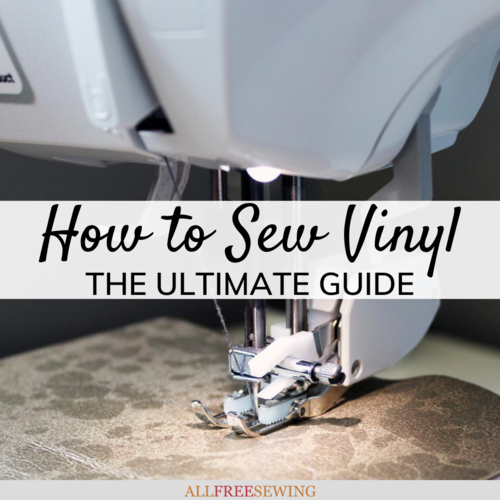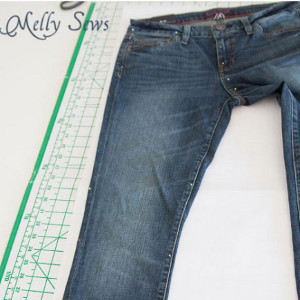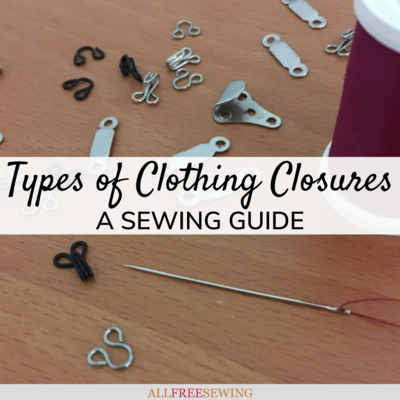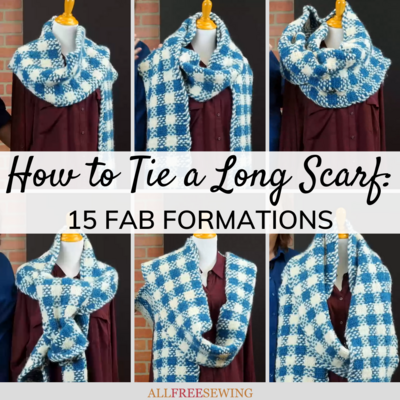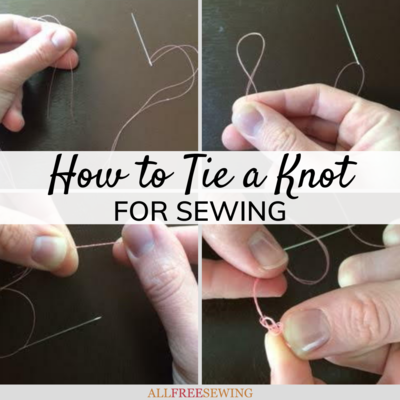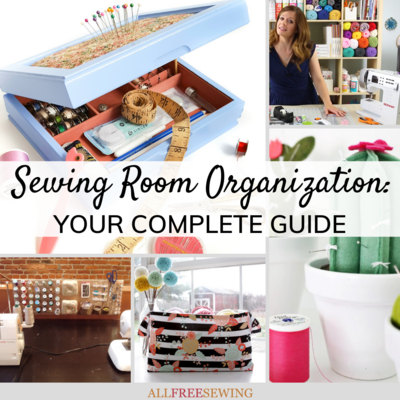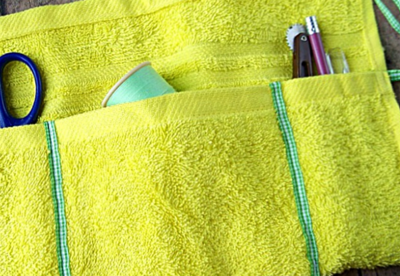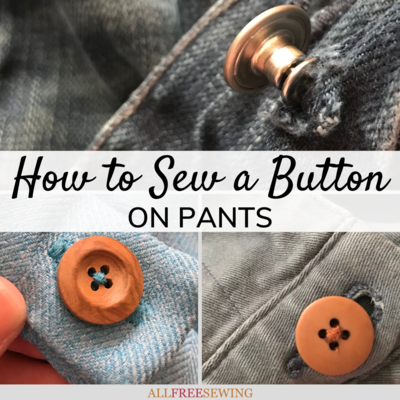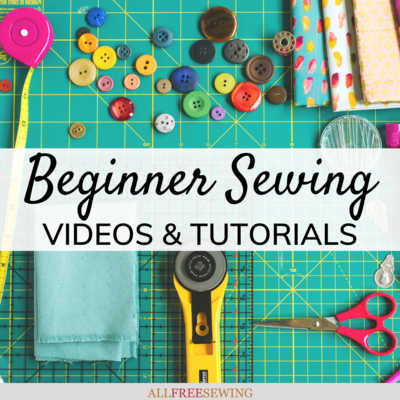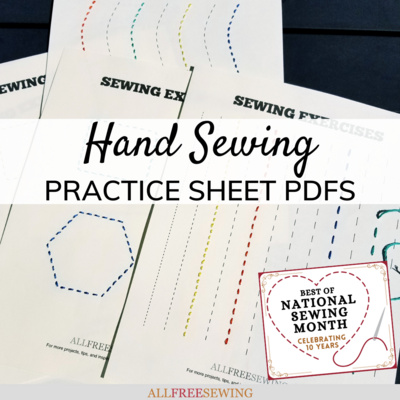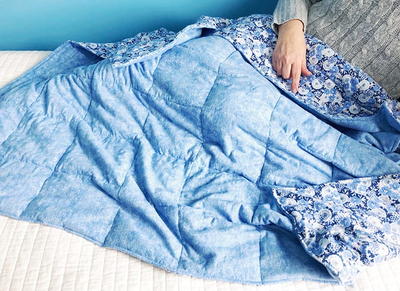How to Sew Vinyl
Sewing vinyl fabric can seem intimidating. Not with this guide and tutorial for how to sew vinyl!
As you begin building your expertise and experience in sewing, chances are you’ll eventually be introduced to a project you’ll want to make in vinyl. That's when this ultimate guide to How to Sew Vinyl will come in handy.
Sewing vinyl clothing, upholstery, and other sewing projects that involve this material can look intimidating but it doesn't have to be.
Vinyl is an excellent fabric for both indoor and outdoor projects. You can literally make everything from baby bibs and raincoats to bags and patio furniture with vinyl.
This guide goes over choosing a needle for sewing vinyl along with choosing thread, and answers frequently asked questions like "can you sew vinyl with a regular sewing machine?" and more.
Vinyl comes in a huge variety of finishes, weights, and textures and with just a few tips and tweaks to your basic sewing machine, you’ll be creating incredible projects from this fabric in no time.
Below, read through everything you need to know about vinyl. There are also lots of pictures to help you spot different types of vinyl at the fabric store without hassle. Well, ready to learn? We sure are!
For more sewing resources, sign up for our newsletter, Sewing it Up!
What is Vinyl?
"Vinyl" really is just a generic term for any woven fabric with a plastic coating. This plastic coating is made to look like imitation leather, laminate, chalk cloth, or oilcloth. It's water-resistant, durable, inexpensive, and flexible. That's why sewing with vinyl is so popular, especially for heavy-duty projects.
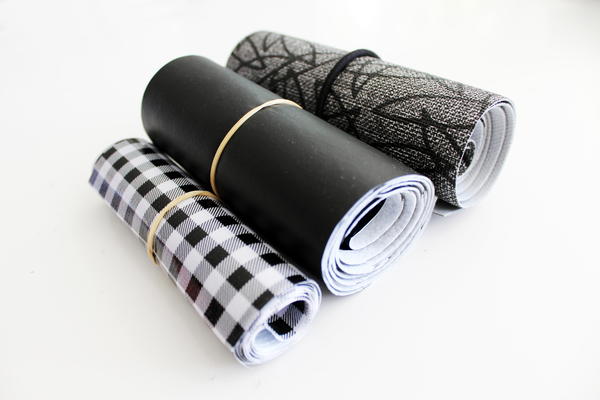
Types of Vinyl
Artificial Leather:
Faux leather comes in a huge variety with everything from shiny pleather to realistic-looking animal hides available. It’s water-resistant and comes in endless textures, colors, and prints. Some artificial leather comes with a textured cloth backing and some is less thick with a woven backing.
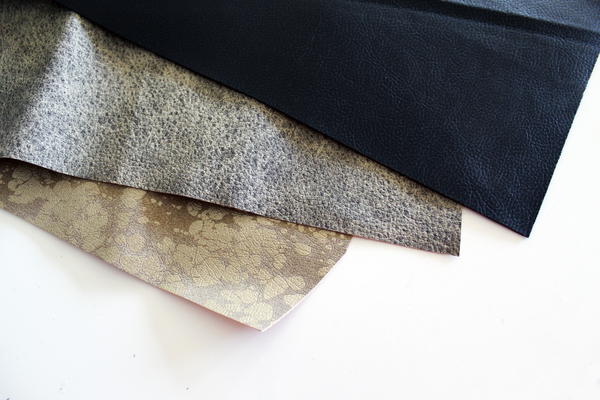
Oilcloth:
Oilcloth often comes in bright, colorful prints and is a slick, smooth material. Since it's so durable, waterproof, and flexible, it's ideal for making raincoats and baby bibs. Modern Oilcloth is a cotton mesh coated with a thick layer of PVC (a synthetic plastic polymer).

Laminated Fabric:
Laminated fabric is a tightly woven, higher quality cotton fabric with a thin layer of polyurethane film over the top. It helps protect the cotton fabric from water and wear while still providing an excellent drape. Often outdoor tablecloths and patio furniture are made with laminated fabric.
Chalk Cloth:
Chalk cloth is slightly heavier in weight than oilcloth and is coated with a wipeable, chalkboard finish. The fabric literally allows you to write and re-write whatever you wish right on the fabric! Its thick material makes it great for craft projects and other home decor but does not drape well for clothing.
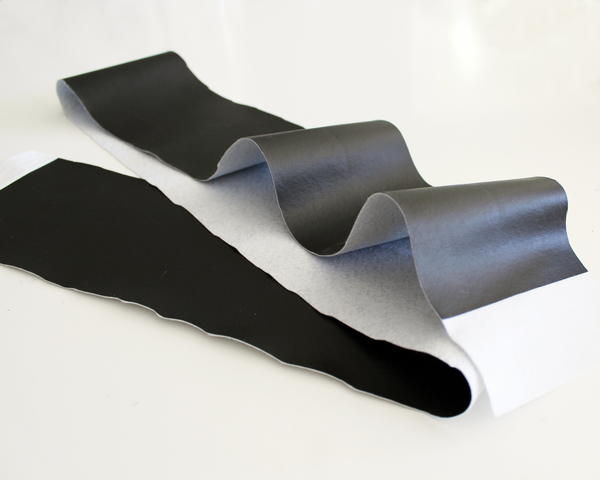
Upholstery Vinyl:
Upholstery Vinyl has a thicker, slightly padded backing that makes the overall weight of the fabric more durable. It is usually slightly less expensive than faux leather but is often made to look like imitation leather.
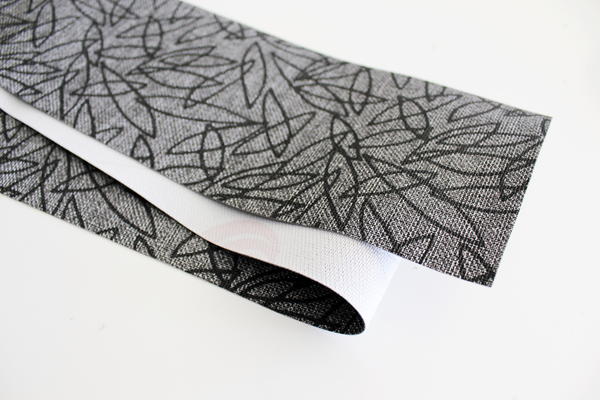
Clear Vinyl:
While technically Clear Vinyl isn’t a vinyl at all since it doesn’t have a woven backing, this flexible plastic fabric is often confused as vinyl so felt the need to include it in this article. Clear (or translucent) vinyl is a single layer of see-through plastic polymer that is often used for small toiletry bags and trendy concert backpacks. When shopping for clear vinyl, the higher the gauge, the thicker your fabric is going to be. Never wash this vinyl. Instead, just wipe it with a clean, damp cloth.

How to Sew Vinyl With a Basic Sewing Machine
The Correct Presser Foot for Sewing Vinyl at Home
Since vinyl can grab and stick to the bottom of a basic presser foot, you’ll need to switch it out for another option. I recommend a walking foot since its additional set of feed dogs will guide your fabric through your sewing machine with more ease. It’s also ideal for working with thicker fabrics and heavier-weight projects in general. If your project calls for sewing through multiple layers of heavy vinyl, you’ll want to have a Walking Foot ready to go.
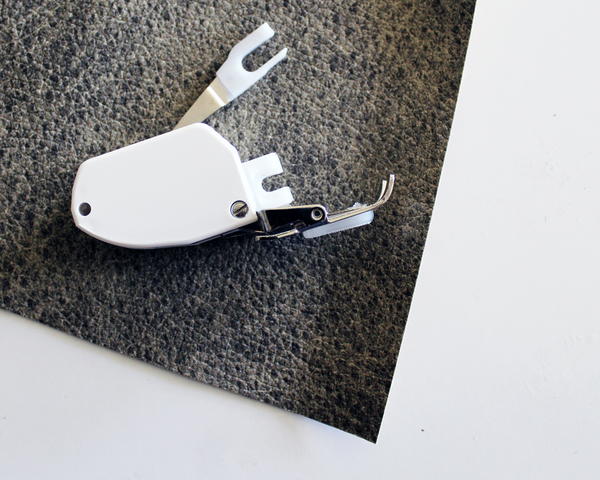
Other options include a Roller Foot or Non-Stick, Teflon Foot. These presser feet improve the fabrics ability to slide through your sewing machine with more ease. If none of these are an option, try sticking some basic, gift-wrapping tape across the bottom of your metal presser foot. The plastic tape creates a smoother surface for the vinyl to glide across, making it easier on your machine.
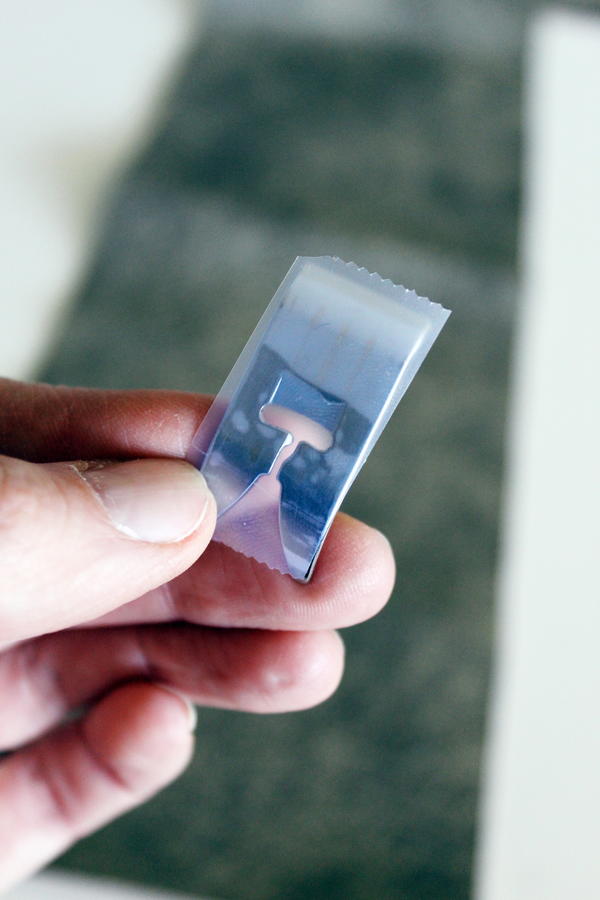
Select the Correct Needle for Sewing Vinyl
If you are asking what type or what size needle for sewing vinyl, then you're not alone. Since Vinyl is a heavier weight fabric, you’ll want a needle designed to manage additional thickness without breaking. Before starting your next project, prep your sewing machine with a Leather or Denim needle size 90/14. You could even use a Denim Twin Needle for perfectly symmetrical stitches.
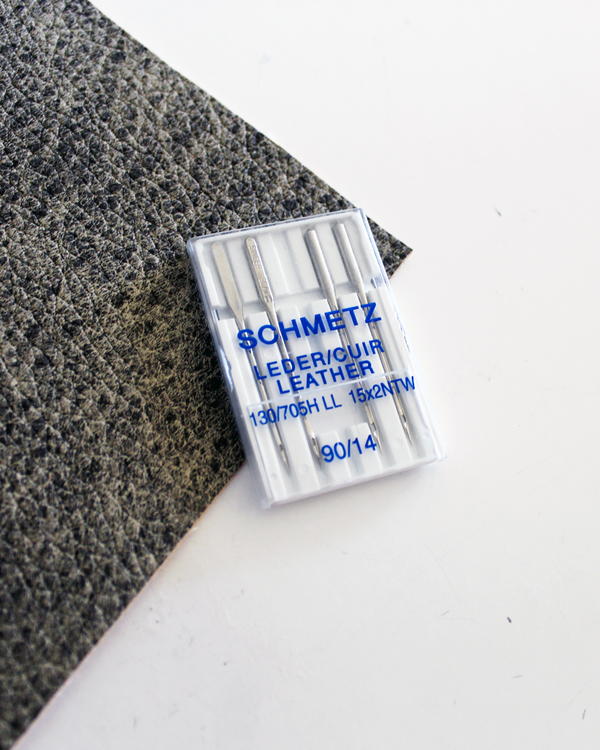
Best Thread for Sewing Vinyl
Since vinyl is a thicker fabric in general, use a Heavy Duty sewing thread to keep everything together. If your project starts to get thick, avoid backstitching and tie the threads at the end to prevent unraveling.
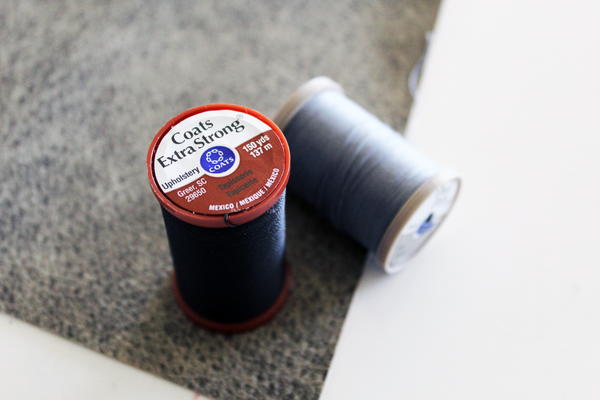
General Vinyl Pattern Tips
One of the most important things to remember when learning how to sew on plastic vinyl is that since the plastic coating on vinyl will show permanent punctures, you should avoid using sewing pins and opt for quilting clips or even binder clips whenever possible. These clips will hold pattern pieces together easily without slipping or damaging the integrity of your fabric.
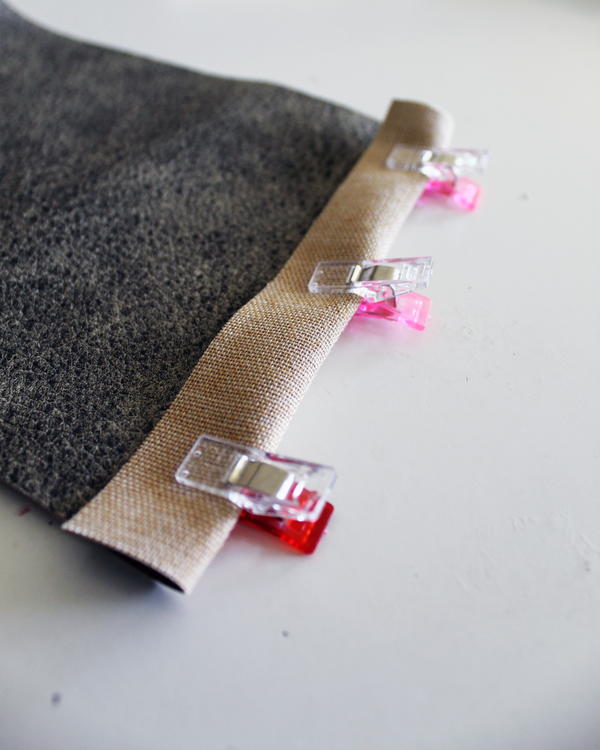
Also, use Tailor's Chalk to mark your pattern pieces rather than a washable pencil. Since the surface of vinyl can be porous, chalk tends to wipe off easier than other alternatives.
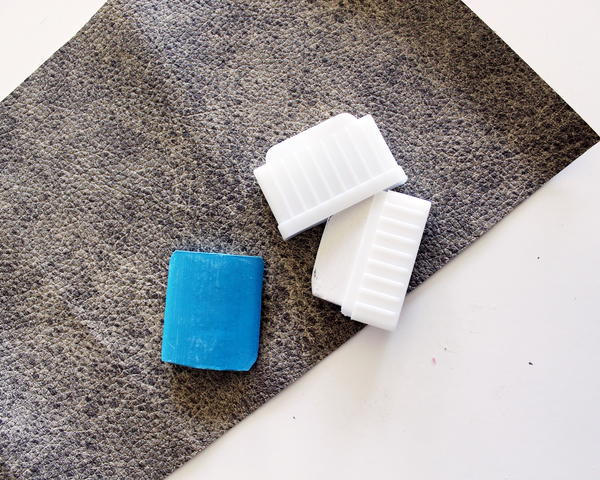
When cutting pattern pieces from vinyl, using a rotary blade will give you exceptionally crisp, smooth lines. Scissors will work just fine as an alternative, but the continuous blade of a rotary cutter will create a smoother finish on raw edges.
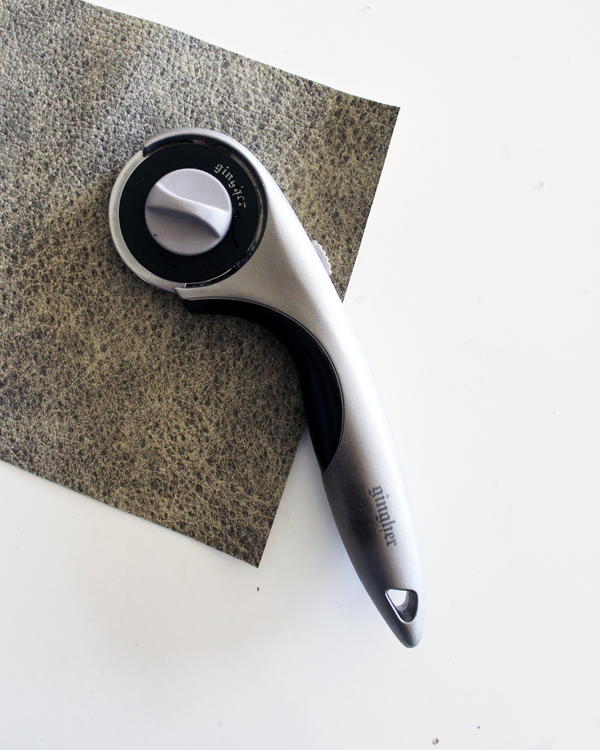
Vinyl Pressing Tips
Since a hot iron will instantly melt vinyl fabrics, avoid ironing vinyl whenever possible. Some vinyl fabrics state that ironing the “wrong” side on a low setting is fine, yet I would recommend avoiding the risk. Instead, try using a rubber mallet or even a Leather Edge Press Roller to press seam allowances open. If your fabric is still not staying in place, try using a standard leather adhesive with a Leather Edge Press Roller to press seam allowances into place permanently.
Removing Creases in Vinyl
When you are storing vinyl fabric, try rolling it up rather than folding your fabric to prevent creases. If your fabric does crease in storage, since ironing is not an option, try laying it flat the next time you take a hot shower and let the steam gently remove the crease. You could also hang it from clips outside in the sun and let the heat from the sun reduce the visibility of a crease naturally.

Determining Stitch Length for Vinyl
Have you ever noticed how easy it is to start a tear in a perforated edge of paper? Since vinyl is largely made of plastic, it can also be prone to tearing once it’s been sewn if the stitches are close together. To create a lasting project, widen your stitch length to 3.0 or longer and avoid tearing altogether. The longer stitch length will actually make your vinyl project stronger.
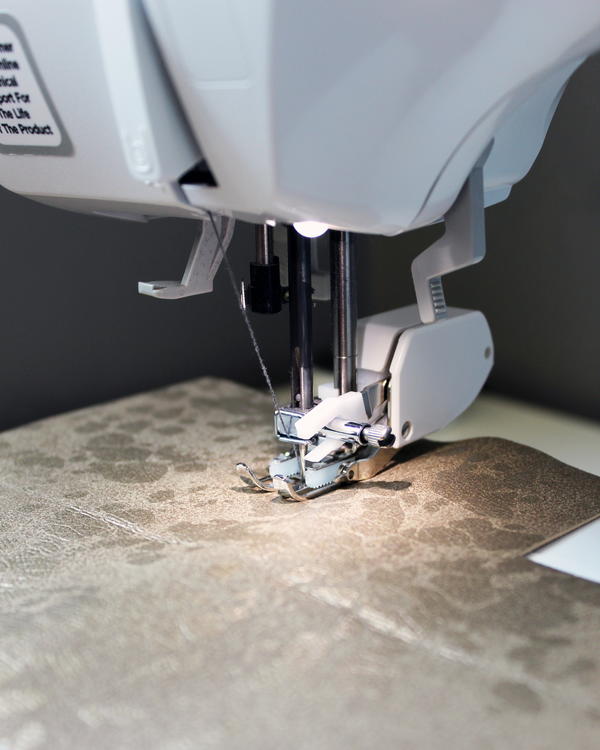
Other Vinyl Tricks and Hacks
If your sewing machine is having difficulty sewing vinyl, try placing a sheet of standard gift-wrapping tissue between your fabric and your presser foot. The tissue is lightweight, translucent, and will help your sewing machine glide the sticky vinyl through. The best part? Once your stitch is complete, it’s extra gratifying to tear the tissue from your project.
Vinyl coating will not keep your fabric from shrinking or warping in the wash. Since different types of vinyl can vary so drastically in care, cut a 6" square and wash it before attempting to pre-shrink the bulk of your vinyl. If you plan on washing your project after it’s used, testing a small section can save you valuable time and money before you pre-shrink the rest of your fabric.
This small test will show you if the plastic coating separates from the cotton of your fabric in the wash, if it buckles and warps, etc… it will give you some insight into how to care for your fabric once your project is complete.
Just like any project, use a scrap piece of fabric to test the stitch length and overall settings on your sewing machine before you start. It’s so much easier to make adjustments before you begin than needing to start over half-way!
I sincerely hope this little guide gave you some helpful takeaways and handy tips that will help jumpstart your next vinyl sewing project. Now that you know how to prep your machine, how to spot quality vinyl before you begin, and more knowledge about the different Vinyl variations, your next project will be easier than ever!
Want More?
How to Sew Canvas >>>
Anything else you want to know when learning how to sew vinyl?
Let us know in the comment section below!
Read NextHow to Sew a Button on Pants

